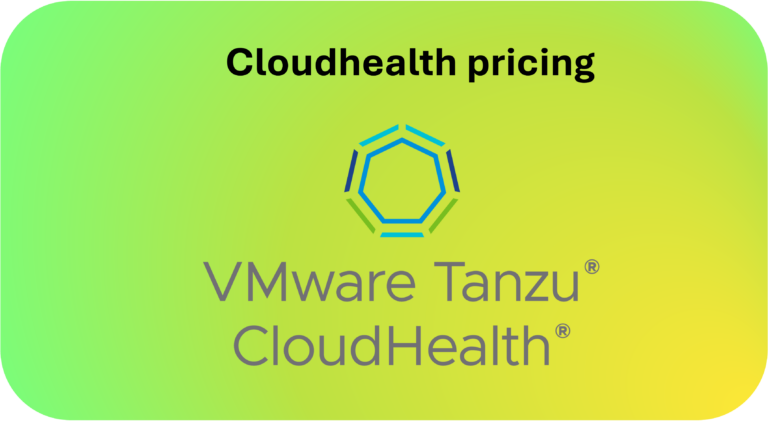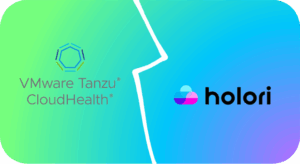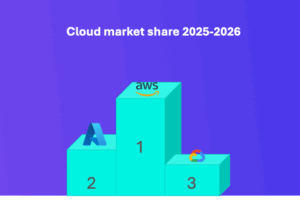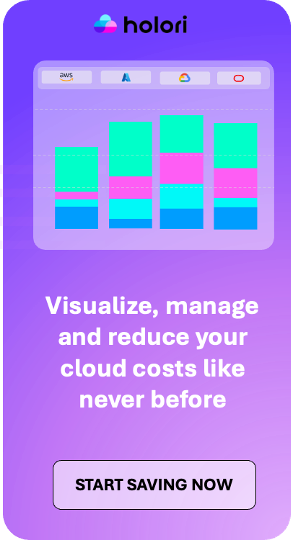Managing cloud costs efficiently is crucial for businesses aiming to optimize their cloud spending. VMware’s CloudHealth is a well-known cloud cost management platform, but its pricing structure can be complex and expensive. In this article, we break down CloudHealth’s pricing and explain why Holori is a more cost-effective alternative.
CloudHealth Pricing Breakdown
CloudHealth pricing is based on a contract model, with costs depending on the level of cloud spend management you require. For the 12 and 24 months contracts, CloudHealth is charging 2,5% of your tracked cloud spend. For the 36-month contract, CloudHealth is charging 2,2% of your tracked cloud spend.
Here’s a breakdown of CloudHealth pricing tiers:
CloudHealth pricing for 12 months contract:
| Plan | Monthly AWS Spend Managed | Cost (12-Month Contract) |
|---|---|---|
| CH150K | Up to $150K/month | $45,000/year |
| CH300K | Up to $300K/month | $90,000/year |
| CH500K | Up to $500K/month | $150,000/year |
CloudHealth pricing for 24 months contract:
| Dimension | Description | Cost/24 months |
|---|---|---|
| CH150K | Manage up to $150K of monthly AWS spend. Addl fees above $150K/mo. | $90,000.00 |
| CH300K | Manage up to $300K of monthly AWS spend. Addl fees above $300K/mo. | $180,000.00 |
| CH500K | Manage up to $500K of monthly AWS spend. Addl fees above $500K/mo. | $300,000.00 |
CloudHealth pricing for 36 months contract:
| Dimension | Description | Cost/36 months | Cost savings compared to 12months contract |
|---|---|---|---|
| CH150K | Manage up to $150K of monthly AWS spend. Addl fees above $150K/mo. | $118,800.00 | 12% |
| CH300K | Manage up to $300K of monthly AWS spend. Addl fees above $300K/mo. | $237,600.00 | 12% |
| CH500K | Manage up to $500K of monthly AWS spend. Addl fees above $500K/mo. | $396,000.00 | 12% |
Additional Usage Costs
- Overage charges: If your cloud spend exceeds the contract limits, you will be charged an extra $0.03 per dollar over your contracted amount.
- Contract commitments: CloudHealth requires long-term commitments of 12, 24, or 36 months, with discounts only available on three-year plans (12% savings).
Key Drawbacks of CloudHealth’s Pricing Model
- With a 3-year commitment, CloudHealth still charges 2,2% of your tracked cloud bill. This is twice more expensive than expensive than Holori that charges a 1% fee without any commitments.
- High upfront costs: A $45,000 annual minimum even for managing relatively small cloud budgets. This is a straight No Go for SMBs.
- Rigid contracts: Users must commit to long-term contracts, limiting flexibility.
- Additional charges for overages: Exceeding contract limits incurs significant extra costs.
Real User Reviews of CloudHealth

To provide a more comprehensive view of CloudHealth, let’s take a look at real user feedback from sources like G2:
Positive Feedback
- Cost Optimization and Budgeting: Users appreciate CloudHealth’s ability to optimize costs and maintain organized budgeting documentation. It also facilitates collaboration among teams, improving cloud financial management.
- Resource Efficiency Recommendations: Many users find CloudHealth’s recommendations useful for optimizing cloud resource usage and governance policies.
Negative Feedback
- User Interface Challenges: Some users find the UI difficult to navigate, requiring additional learning resources to fully utilize the platform.
- Reporting Limitations: The reporting features lack customization options and can be challenging to scale, especially for users managing GCP environments.
- Performance Issues: Occasional lag and freezing have been reported, affecting workflow efficiency.
Key Features of CloudHealth

CloudHealth by VMware is a cloud cost management platform that helps businesses optimize cloud spending, improve governance, and enhance security across multi-cloud environments. It provides deep visibility into cloud costs, enabling organizations to allocate budgets effectively and maximize ROI.
Core Features:
- Cost Management & Optimization: CloudHealth analyzes cloud usage and spending, offering recommendations to reduce costs through rightsizing, purchasing reserved instances, and eliminating waste.
- Budgeting & Forecasting: The platform allows businesses to set budgets, track spending trends, and forecast future costs to avoid budget overruns.
- Multi-Cloud Visibility: It consolidates financial, operational, and security data from AWS, Azure, Google Cloud, and on-premise environments into a single dashboard.
- Policy-Driven Governance: CloudHealth enables automated policies to enforce best practices for cost control, security compliance, and operational efficiency.
- Security & Compliance: The platform identifies security vulnerabilities, misconfigurations, and compliance risks based on industry standards.
- Reporting & Custom Dashboards: Users can create tailored reports and dashboards to monitor KPIs, team-specific cloud expenses, and overall cloud health.
CloudHealth is widely used by enterprises to gain better control over cloud spending, enforce governance, and optimize cloud performance, making it a popular choice for FinOps and cloud management teams.
Why Holori is a Better and Cheaper Alternative
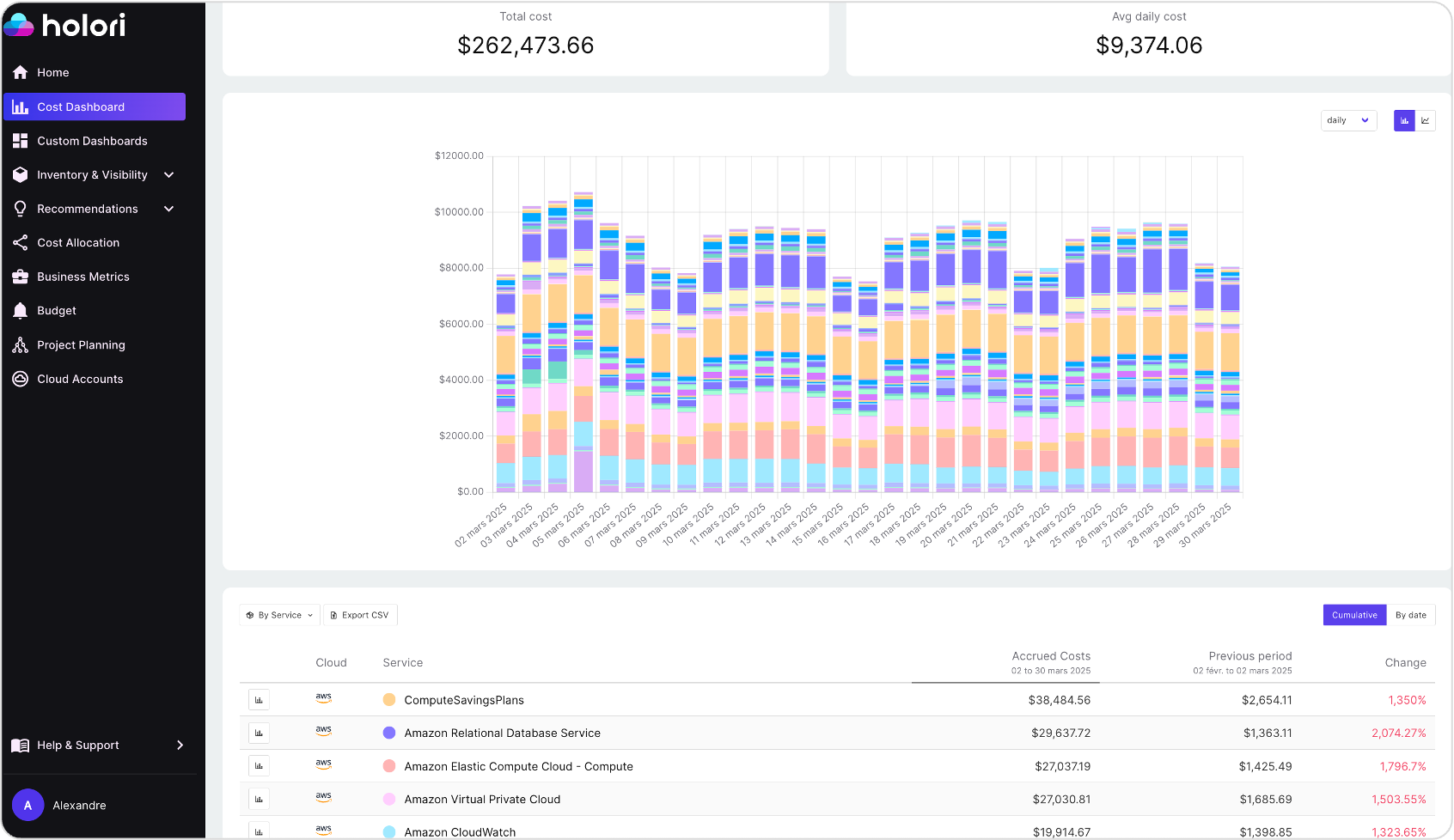
Holori is a modern FinOps platform that delivers cost visibility, optimization, and governance—without the complexity or high costs of CloudHealth. Here’s why Holori is the better choice:
1. Transparent and Affordable Pricing
CloudHealth requires costly enterprise contracts and complex pricing structures. In contrast, Holori offers a transparent, pay-as-you-go model with no hidden fees.
- Flat 1% fee on your cloud spend, making it significantly more affordable.
- No minimum commitment—start with a free plan, and the next tier is just $49/month.
- Unlike CloudHealth, which can become expensive at scale, Holori remains cost-efficient for businesses of all sizes.
2. Multi-Cloud Cost Management with Intuitive Dashboards
Holori consolidates costs across AWS, Azure, and Google Cloud, OCI and Datadog providing real-time dashboards with powerful visual insights. Soon Holori will add integration for AI costs such as OpenAI and Anthropic.
- Customize reports with bar charts, pie charts, tables, and diagrams tailored for specific teams.
- Instantly spot cost anomalies and track spending trends without complex configurations.
3. Cloud Infrastructure Visualization and Auto-Sync
Unlike CloudHealth, Holori automatically generates cloud architecture diagrams and updates them over time.
- Auto-sync infrastructure diagrams for better visibility into cloud environments.
- Track configuration changes over time, ensuring better governance and compliance.
4. Advanced Cost Allocation & Budgeting
Holori goes beyond basic cost allocation by offering an intuitive, drag-and-drop interface.
- Use Virtual Tags to map costs across projects, teams, and business units—without relying on native cloud provider tags.
- Build custom cost structures visually, ensuring clarity in cloud expense management.
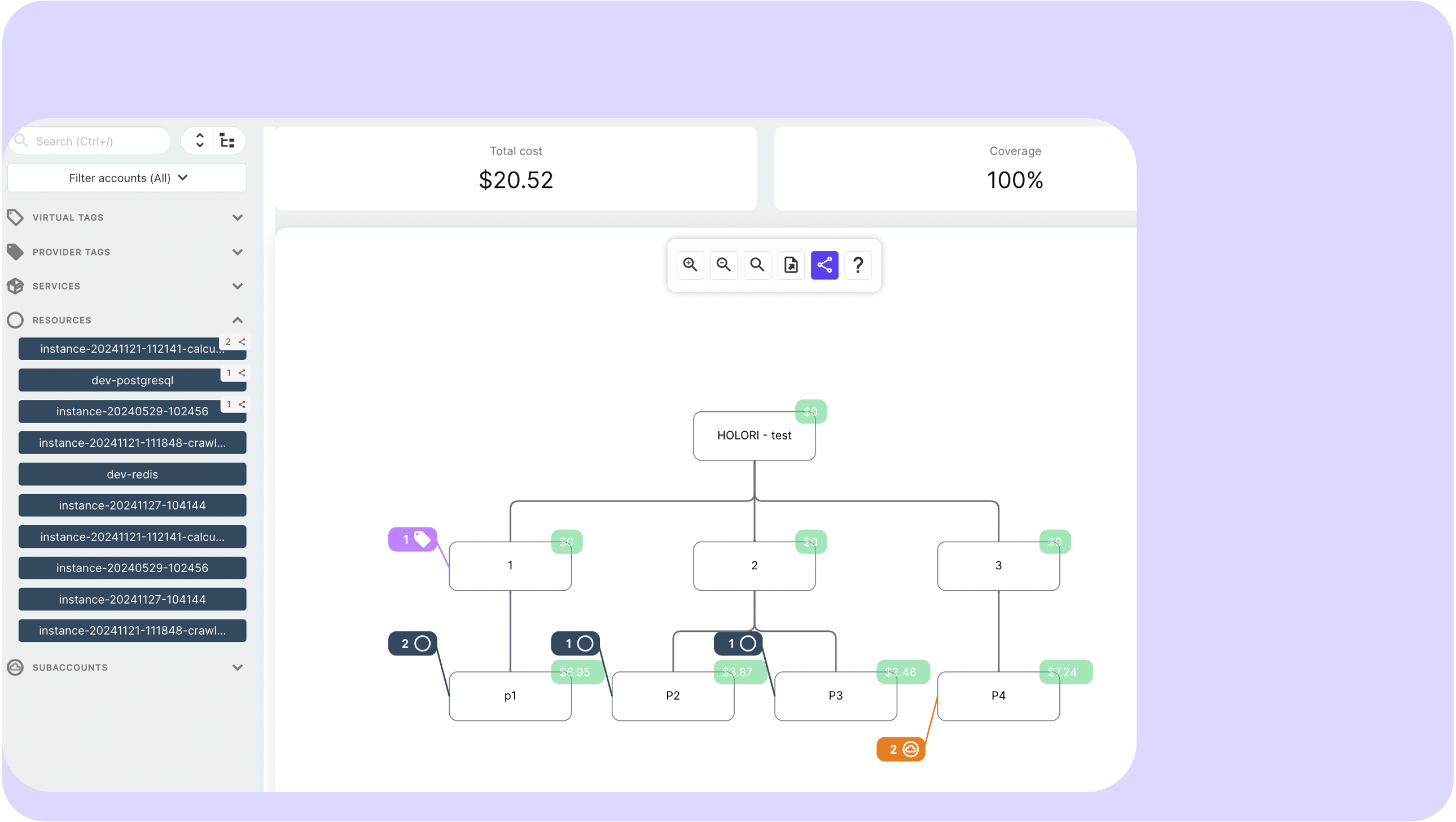
5. A Top-Notch, Intuitive User Experience
Unlike CloudHealth’s outdated and complex UI, Holori is built for speed, simplicity, and ease of use.
- A modern, intuitive interface makes cloud cost management effortless.
- No steep learning curve—start optimizing cloud costs in minutes.
- Smooth, responsive design ensures a seamless user experience, even for non-technical teams.
With Holori, you get powerful FinOps capabilities at a fraction of CloudHealth’s cost—without enterprise lock-in. Try it today and take full control of your cloud expenses.
Conclusion- CloudHealth Vs Holori
The FinOps landscape is constantly evolving, with businesses demanding real-time cost visibility, automation, and flexibility to manage cloud expenses effectively. However, CloudHealth remains a legacy solution, built for the cloud challenges of 10 years ago—not today’s fast-paced, multi-cloud reality.
With high costs, rigid contracts, and a complex interface, CloudHealth struggles to keep up with the modern demands of FinOps teams. In contrast, Holori is a next-generation FinOps platform that offers affordable, transparent pricing, a modern, intuitive UI, and powerful infrastructure visualization—capabilities that CloudHealth simply lacks.
If you’re looking for a cost-effective, easy-to-use alternative that evolves with FinOps best practices, Holori is the smart choice.
Stop overpaying for outdated tools—try Holori today and take full control of your cloud costs: https://app.holori.com/


